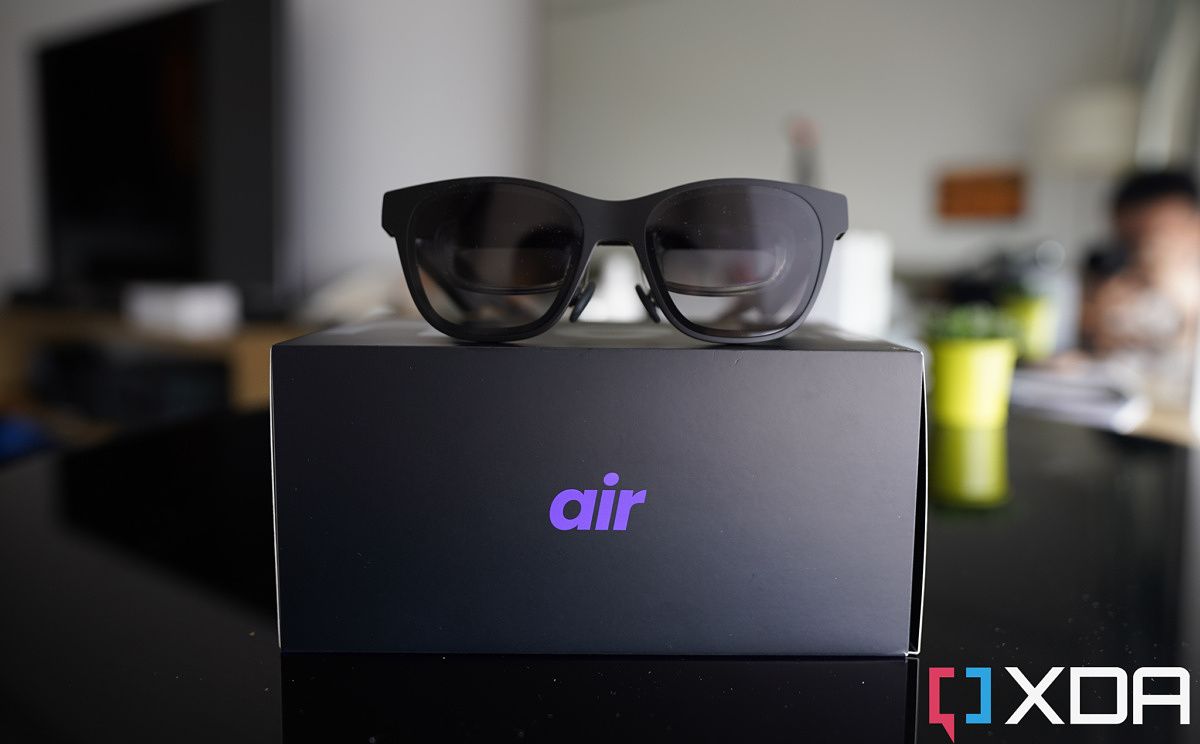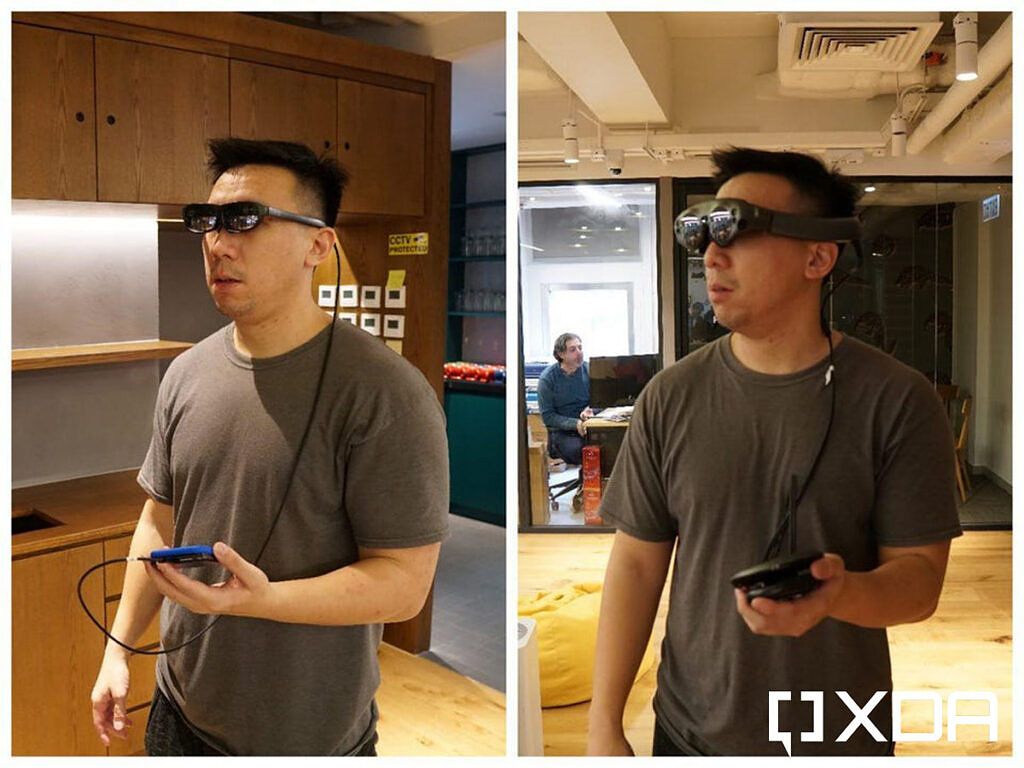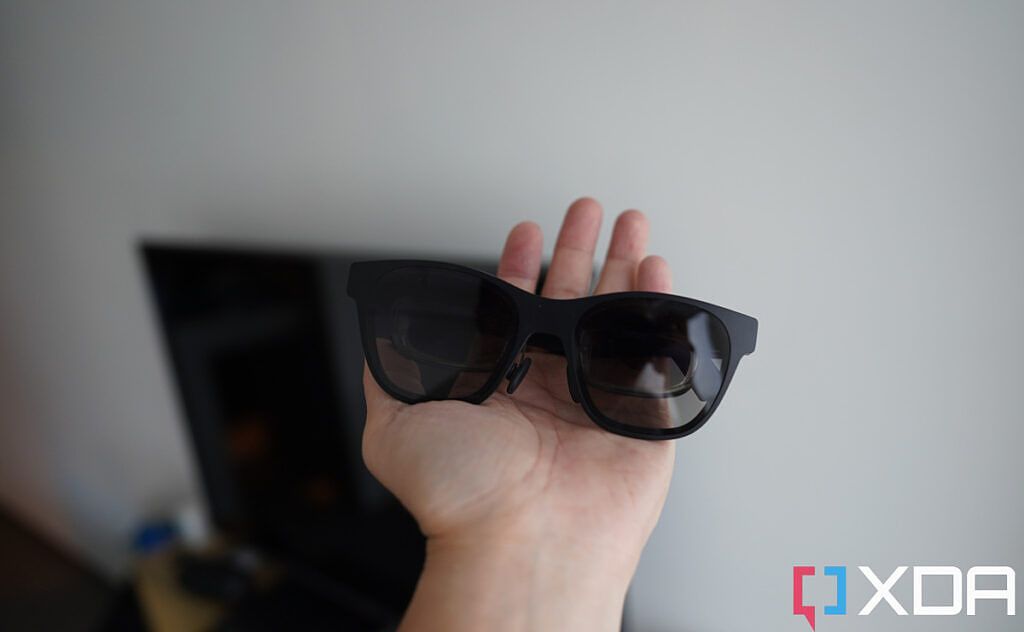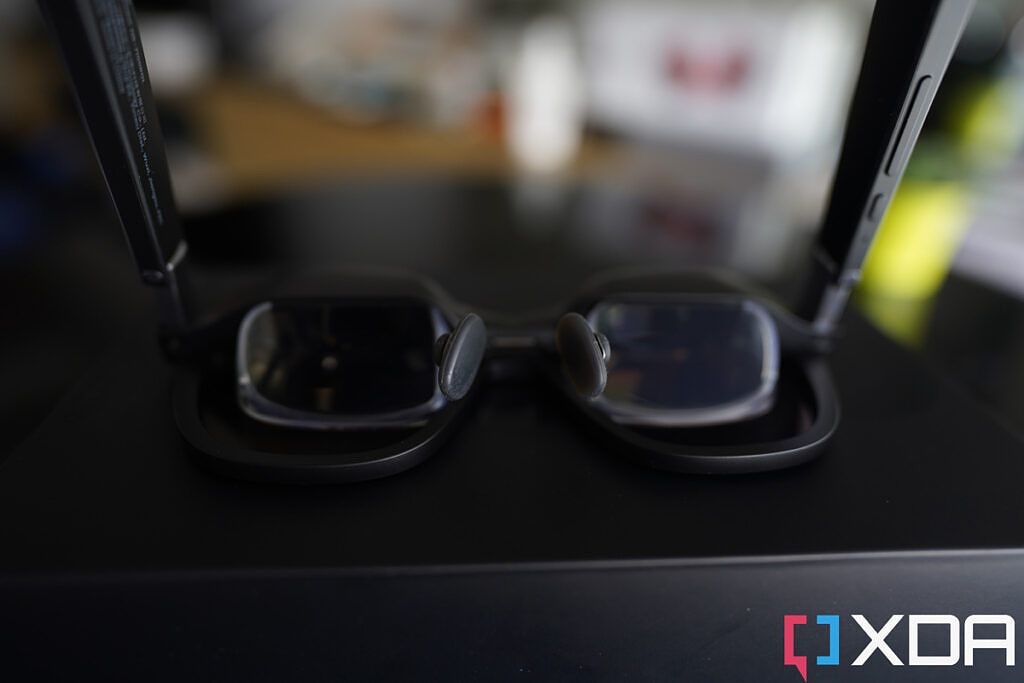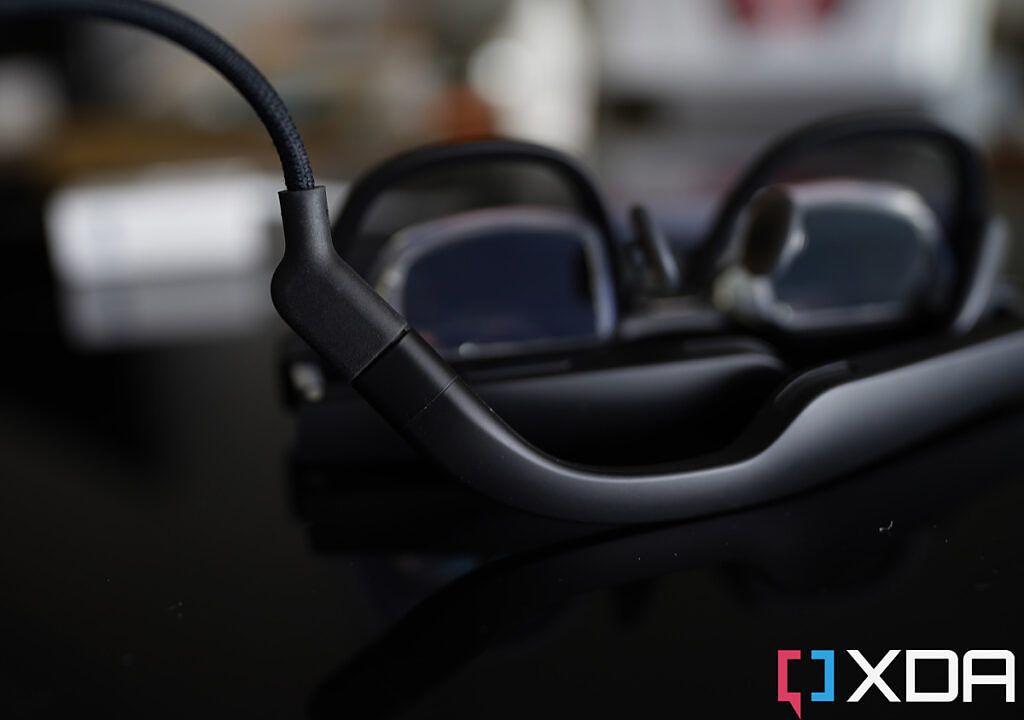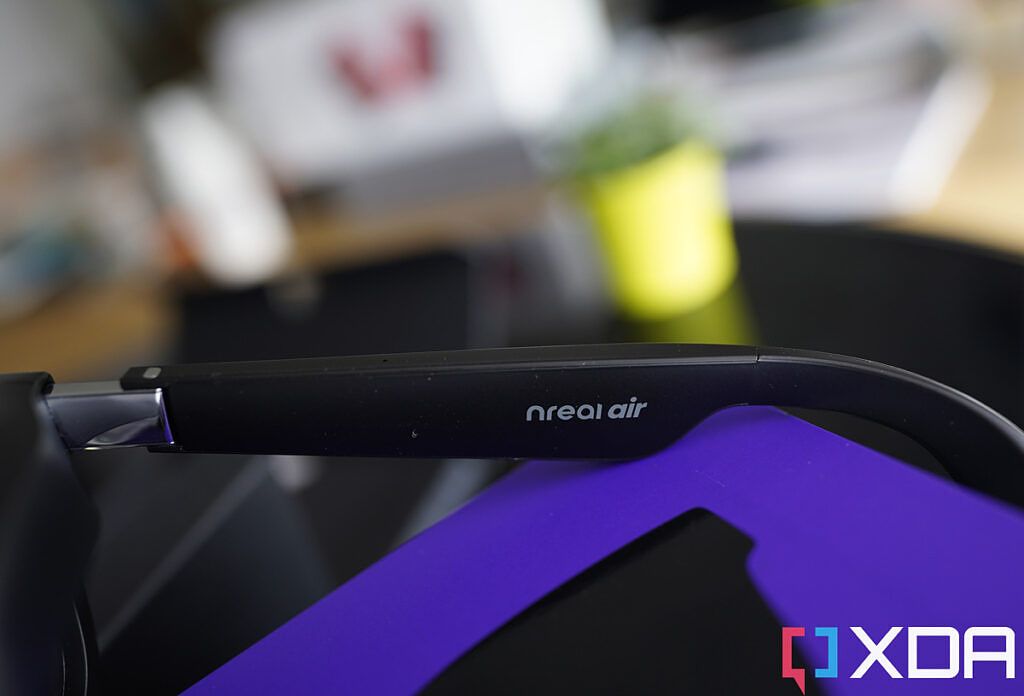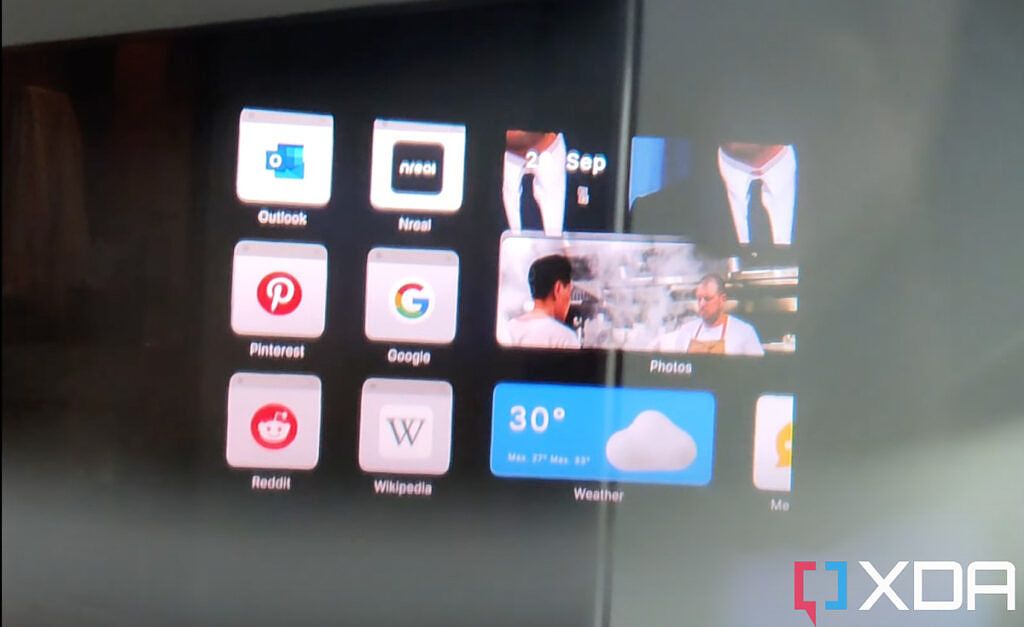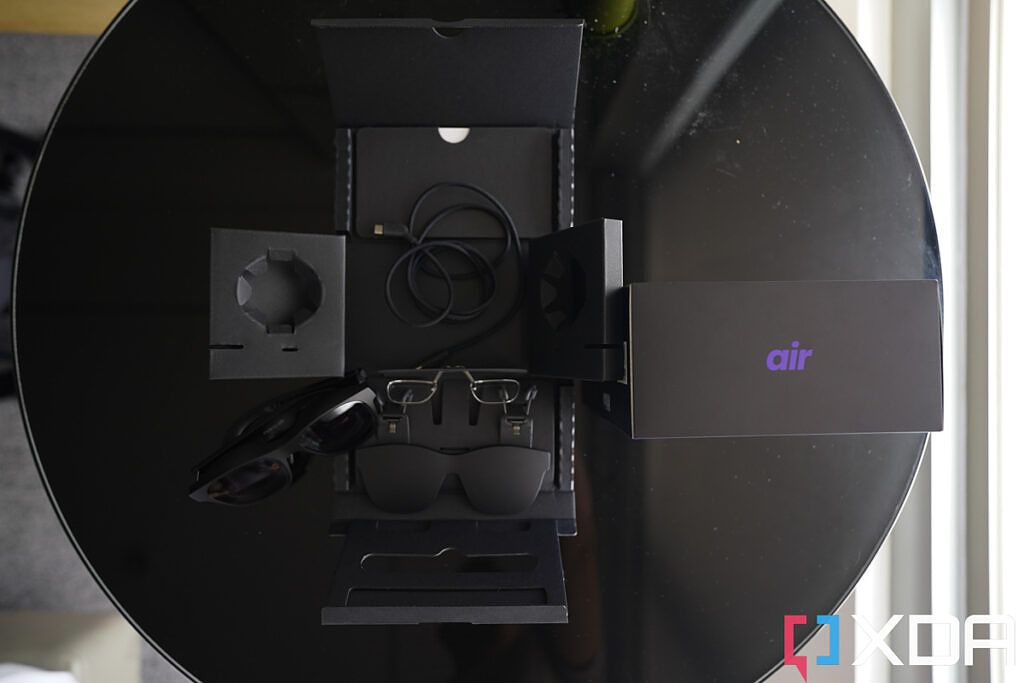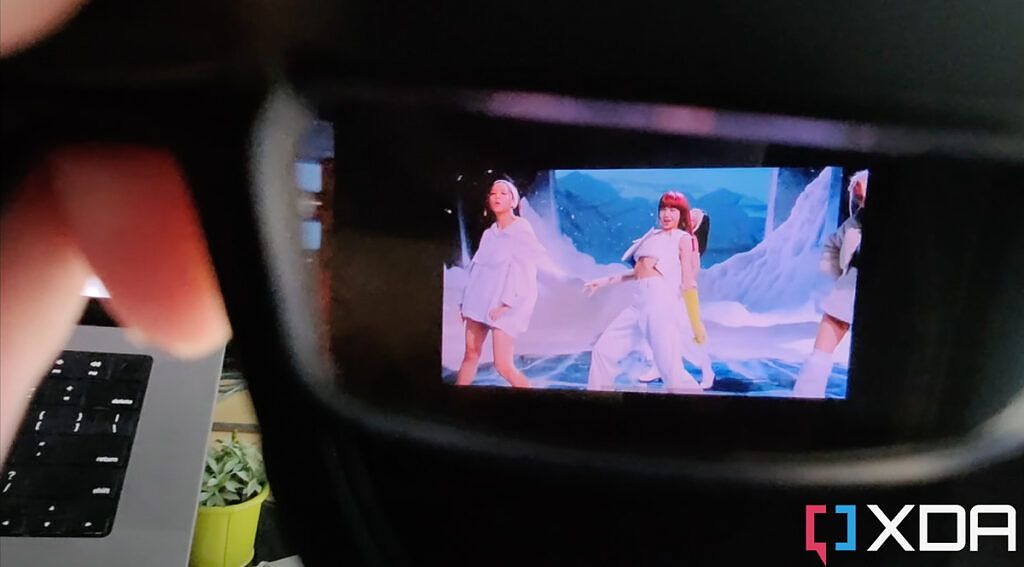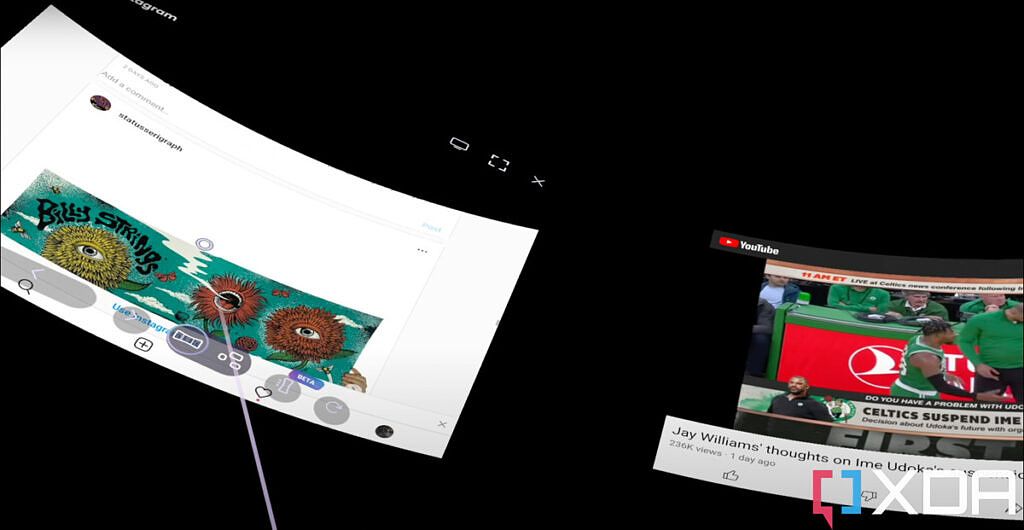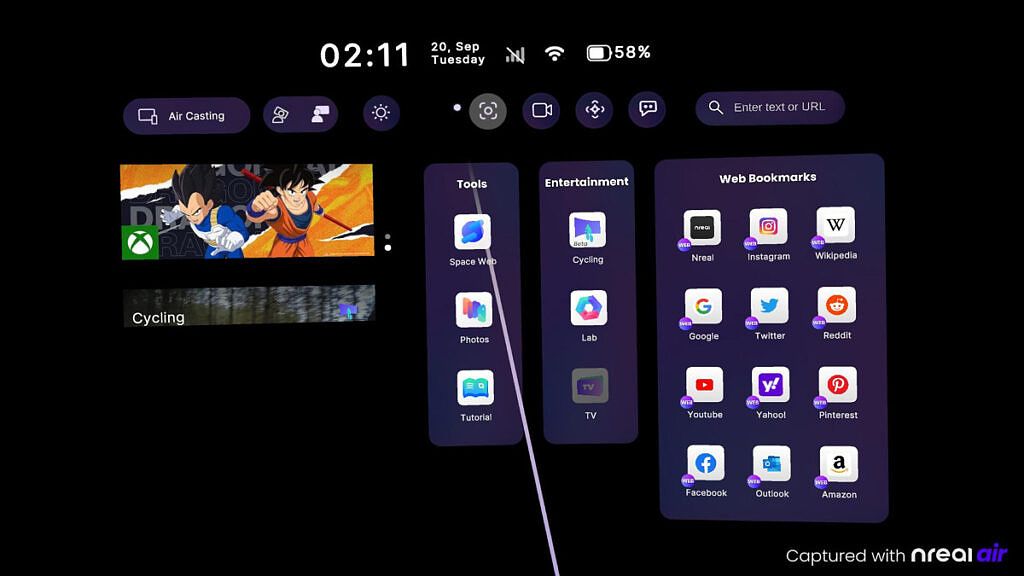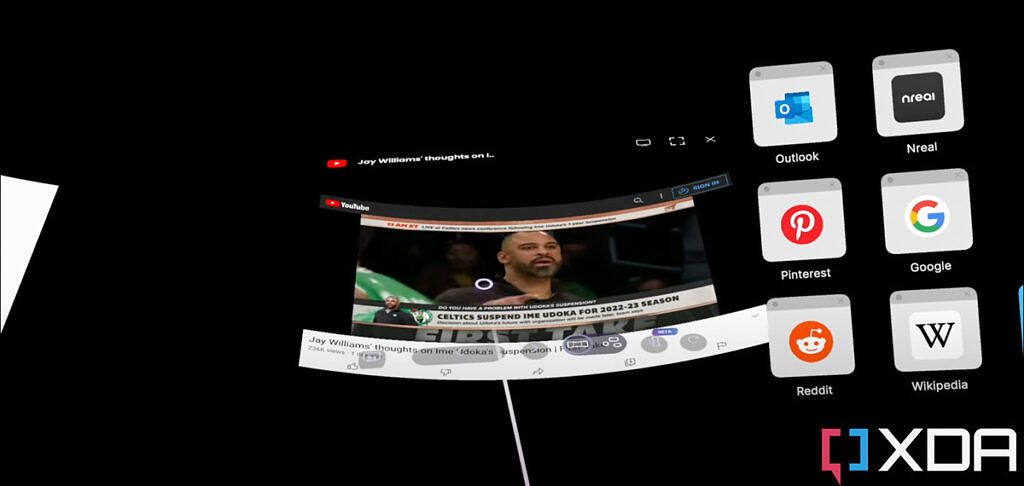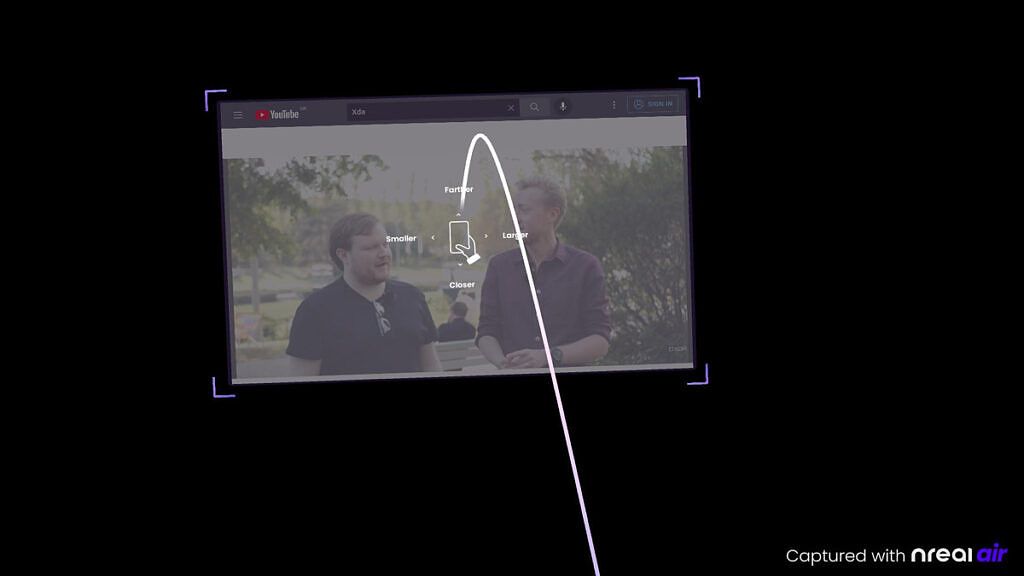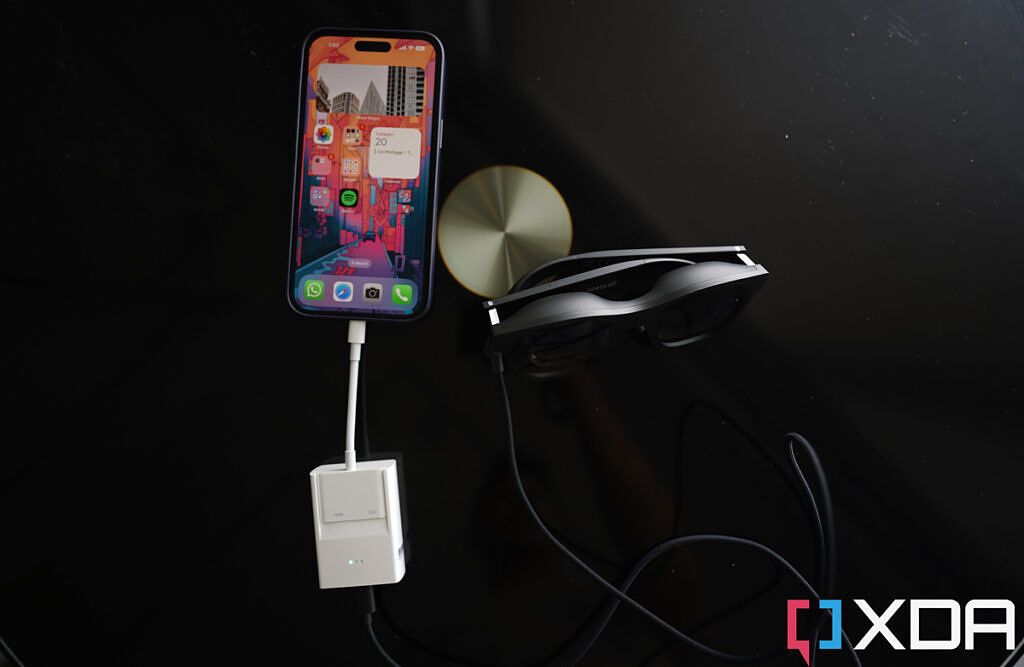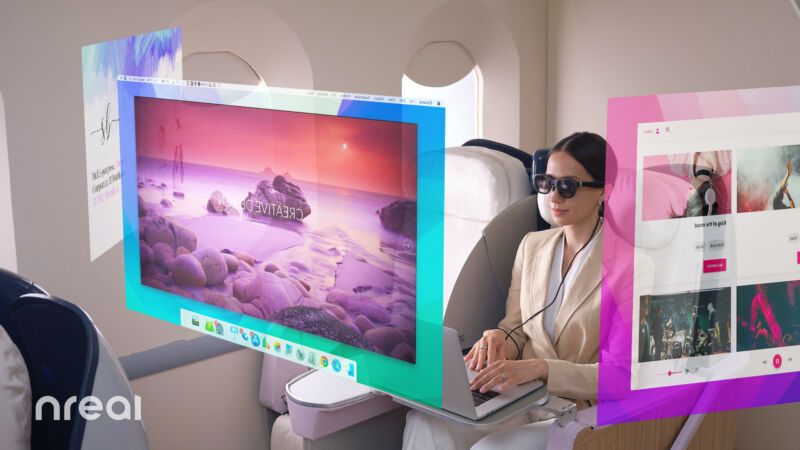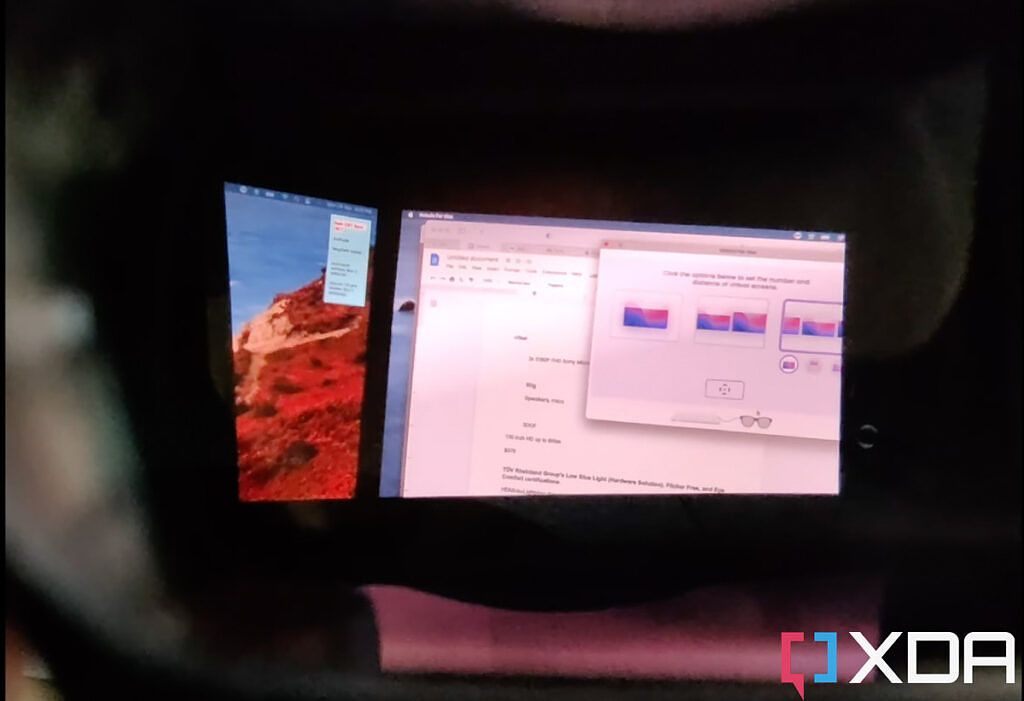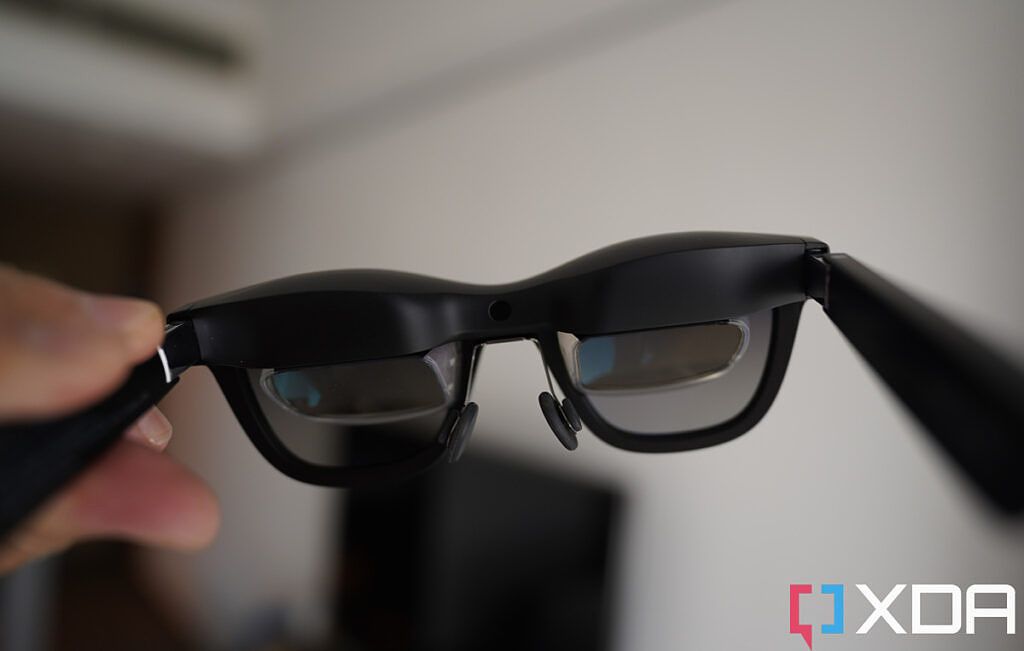I still remember meeting Xu Chi, the founder of augmented reality glasses maker Nreal, three years ago. We were meeting at a Hong Kong co-working space, just a few hours before he was set to fly to Las Vegas, where was going to introduce his company's first augmented reality (AR) glasses at CES 2019.
I remember it fondly because Xu pitched an exciting product -- AR glasses that were significantly less bulky and lower priced than the available options from Microsoft and Magic Leap at the time.
"People feel self-conscious wearing bulky AR glasses [like the Microsoft HoloLens]," he said to me at the time, before handing me a prototype of what would later become the Nreal Light to try on.
While the prototype Nreal glasses were much smaller than Microsoft's HoloLens, I still thought the Nreal Light were still too bulky and awkward looking. And I definitely felt self-conscious wearing them in a busy co-working space too. The thing looked goofy on me.
The visuals that were pumped out to my eyes also felt flickery and gave me a headache after a few minutes. I also had to carry a small box, which was then connected to a smartphone, just to get the glasses to work. Long story short, this was a very clunky product and experience that sounded cool but had no mainstream appeal.
Fast forward to three and half years later and Nreal's latest product, the Nreal Air, has made significant strides that I think may have mainstream appeal now.
These strides include more than just hardware improvements -- the Nreal Light are much smaller, don't need a standalone box to work, and visuals look far more immersive -- but also because the glasses now work with arguably the most mainstream and widely used consumer products on earth: iPhones and MacBooks.
Oh, and the glasses also no longer look so goofy on my face -- at least I think they don't?
Priced at $379, the Nreal Air are perhaps still a bit too expensive to appeal to the masses. But it's a reasonable enough entry point for those with some expendable income and who want a portable screen they can wear around the house and on long commutes.
Nreal Air: What is it and how does it work?
The Nreal Air have actually been available for purchase since early 2022, but last week it had a re-launch of sorts in the US because it became available on Amazon, and also officially gained support for iPhones and Macs. Before that, Nreal Air only worked with USB-C devices like Android, Nintendo Switch, and actually, the iPad Pro.
The Nreal Light are a plasticky pair of AR glasses with an overall design that borrows from the iconic Ray-Ban Wayfarer look. There are two 1080p micro-OLED binocular screens that together will project visuals in front of the wearer's face. The visual can get as big as an equivalent of watching a 201-inch television.
Unlike the prototype Nreal glasses I tried in 2019, the visuals are much improved, here and Nreal has gained official certificates from TÜV Rheinland for "low blue light," "flicker free," and "eye comfort." On my end, I can confirm I've worn the glasses watching a two hours movie and didn't feel uncomfortable.
Connection is made via the included detachable USB-C cable. For devices with USB-C 3.0, like recent Samsung Galaxy flagships or the 2021 iPad Pro, you can simply plug in the glasses and immediately mirror the screen.
A pair of speakers -- one on each arm -- pump out decent audio, though you'd want to use wireless earbuds for true immersion. There's also a rocker on the right arm that adjusts brightness. The glasses are powered entirely by the device into which it's plugged. On a Galaxy Z Fold 4, I find that a two-hour movie-watching session will drain nearly 30% of juice from my phone.
The glasses are lightweight at 76g and Nreal includes multiple nose pieces for varying nose sizes. There's also a clip for adding prescription lenses that I didn't try because my eyesights are fine.
These are AR glasses, meaning you can project visual overlays over the real world. To that end, the Nreal Air packs a series of sensors to allow for 3DoF rotational head tracking movement. This means if I am projecting a visual, the display can move along as I rotate my head. The lenses are normal see-through lenses, so you can project imagery onto the "real world" if you wish.
But I find this mode mostly pointless, as there aren't enough applications that really bring any real AR functionality. Instead, I prefer to cover the lenses with the included lens cover (meaning I can no longer see through the glasses), and instead project visuals onto a black canvas.
During the day, even with the lens cover on, light and the "real world" still sneaks through to my peripheral vision, so the experience is still not that immersive.
But if I use the Nreal Air at night, in a dark room? Then the experience improves drastically, really feeling like a screen is floating in front of my face.
I often spend the last hour of my day laying in bed reading/consuming content off a phone/tablet, just like everyone else does. There are two ways I do this: either I lay on my back and hold the device with my hand, or I prop the device against a pillow or bedside table and lay sideways. The Nreal Air has completely replaced the need for either of those awkward positions because I now wear the glasses in bed and let the content beam in front of my face naturally. This allows me to lay down face up in a more natural position and watch content hands-free. The Nreal Air has changed how I spend the last hour of my day before I fall asleep.
Nreal Air: Software
The Nreal Air can plug and play directly with many devices I already own, but to fully make use of it, Nreal suggests you download the app "Nebula," built specifically for Nreal products. Nebula replaces screen mirroring by projecting a Nreal-designed UI. You navigate through the interface via head movements or swiping on the phone screen like a trackpad.
Within Nebula, you can still access all your phone's content, but you can now open multiple floating windows (compared to screen mirroring, where you're bound by what the phone's UI can show). These windows can "play along" with the real world, mapping themselves onto walls, so if I lower my body, the screen appears to be hovering above me at an angle.
I find mapping content to the real world also too gimmicky for my taste, so I turn it off and just project in front of my face at a normal angle. You can resize and reposition the screen, though the process can be tricky and takes a learning curve of around 10 minutes.
As mentioned, the visuals look great, though I find the Nreal Air's brightness levels to be too high. When I'm using it in a dark room, even the lowest brightness level feels a bit too bright for my eyes. I prefer to watch dimmer content in a dark room.
Using with iPhone is a hassle -- I'd say don't bother
One major advertising point of the Nreal Air's re-launch so to speak is it now works with iPhones. However, the process is too much trouble to be worth it. Because the iPhone still uses an outdated, proprietary port (Lightning), you must use not one but two dongles to get the glasses to work with an iPhone: you need a specific adaptor made by Nreal (officially named Nreal Adaptor) that costs $60. This adaptor only converts the Nreal's USB-C output to HDMI. You then still need an HDMI to Lightning adaptor for the rest of it to work. The connection looks like this.
All this hassle and you can't even use the Nebula UI because the app is not available on iOS -- you can only screen mirror your iPhone screen. It's simply too much trouble. But the good news is, the Nreal Air works well with another Apple product.
But using it with Mac feels futuristic
Nebula is available on macOS and this Mac version differs from the Android version. It doesn't overlay Nreal's custom floating UI. Instead, it mirrors the Mac's display and extends two more on the side. The promotional image provided by Nreal below has the usual advertisement embellishments (the screens don't show up quite as large), but the general concept is accurate.
I don't have any professional tools to capture the exact virtual desktop I see; the best I can do is put a smartphone camera up against the glasses, but you can get an idea of how the virtual desktop looks.
The benefit of this should be obvious. The Nreal Air can virtually extend your MacBook screen so you can open more windows without feeling cluttered. Right now, the Nebula software for Mac is in beta stage, and the visuals pumped out aren't as immersive or clean as the Android app. There's a bit of jelly effect if I pan my head too much for example. But it's usable already, I wrote part of this article using the virtual desktop, with this page on the main screen, Slack on another, and Twitter on the third.
Should you buy the Nreal Air?
I think back to my meeting with Xu and how eager he was to tout the benefits of AR, and how it would change our daily lives. He's not alone, anyone building AR glasses, whether they be for Google or Microsoft, tries to sell us a future in which an AR overlay can give us turn-by-turn navigation in the real world, or show us contextual information as we look at things, like the way Tony Stark's Iron Man helmet does for him.
We are clearly still so, so far away from that, and I'm not sure if that future will ever get here. But despite my not believing in AR, I do believe in having a virtual large screen that you can bring with you anywhere. I'm boarding a long-haul flight this weekend and I'm definitely packing the Nreal Air with my carry-on bag so I can watch movies on a larger, better screen than whatever the airplane provides me.
If the Nebula Mac app improves and visuals become more stable, I would even wear it at coffee shops when working off my MacBook. At the very least, the Nreal Air is my YouTube-watching, Twitter reading machine every night in bed.
I know, I know -- those who preach the importance of digital detox and staying away from screens before bedtime are probably shaking their heads. But I mainly review smartphones for a living, so it'd be pretty hard for me to stay away from screens anyway.
Now, should you buy this? If you thought the usage scenarios I just described and thought "cool!" and you're okay with spending $379, then sure. If you are disgusted by the idea of having even more screens right up on your face, then stay away.
There's probably a third group, those who think this tech is cool, but too overpriced at $379 right now. I do think this is perhaps the largest group, and the price will keep Nreal Air a niche product for now.
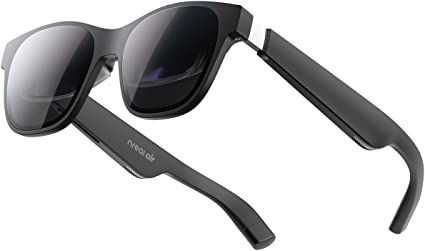
Nreal Air
The Nreal Air are AR glasses that can project a screen equivalent of 200-inches in front of your face.

